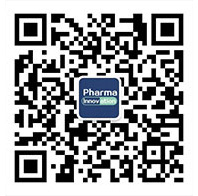The American College of Physicians (ACP) has released new clinical guidelines providing practical recommendations for testosterone therapy in adult men with age-related low testosterone.
The evidence-based recommendations target all clinicians and were published online January 6 in Annals of Internal Medicine, highlighting data from a systematic review of evidence on the efficacy and safety of testosterone treatment in adult men with age-related low testosterone.
Serum testosterone levels drop as men age, starting in their mid-30s, and approximately 20% of American men older than 60 years have low testosterone.
However, no widely accepted testosterone threshold level exists that represents a measure below which symptoms of androgen deficiency and adverse health outcomes occur.
In addition, the role of testosterone therapy in managing this patient population is controversial.
"The purpose of this American College of Physicians (ACP) guideline is to present recommendations based on the best available evidence on the benefits, harms, and costs of testosterone treatment in adult men with age-related low testosterone," write Amir Qaseem, MD, PhD, MHA, from the American College of Physicians, Philadelphia, Pennsylvania, and colleagues.
"This guideline does not address screening or diagnosis of hypogonadism or monitoring of testosterone levels," the authors note.
In particular, the recommendations suggest that clinicians should initiate testosterone treatment in these patients only to help them improve their sexual function.
According to the authors, moderate-certainty evidence from seven trials involving testosterone treatment in adult men with age-related low testosterone showed a small improvement in global sexual function, whereas low-certainty evidence from seven trials showed a small improvement in erectile function.
By contrast, the guideline emphasizes that clinicians should avoid prescribing testosterone treatment for any other concern in this population. Available evidence demonstrates little to no improvement in physical function, depressive symptoms, energy and vitality, or cognition among these men after receiving testosterone treatment, the authors stress.
ACP recommends that clinicians should reassess men's symptoms within 12 months of testosterone treatment initiation, with regular re-evaluations during subsequent follow up. Clinicians should discontinue treatment in men if sexual function fails to improve.
The guideline also recommends using intramuscular formulations of testosterone treatment for this patient population instead of transdermal ones, because intramuscular formulations cost less and have similar clinical effectiveness and harms.
"The annual cost in 2016 per beneficiary for TRT [testosterone replacement therapy] was $2135.32 for the transdermal and $156.24 for the intramuscular formulation, according to paid pharmaceutical claims provided in the 2016 Medicare Part D Drug Claims data," the authors write.
In an accompanying editorial, E. Victor Adlin, MD, Lewis Katz School of Medicine at Temple University, Philadelphia, Pennsylvania, notes that these new ACP guidelines mostly mirror those recently proposed by both the Endocrine Society and the American Urological Association.
However, he predicts that many clinicians will question the ACP's recommendation to favor use of intramuscular over transdermal formulations of testosterone.
Although Adlin acknowledges the lower cost of intramuscular preparations as a major consideration, he explains that "the need for an intramuscular injection every 1 to 4 weeks is a potential barrier to adherence, and some patients require visits to a health care facility for the injections, which may add to the expense."
Fluctuating blood testosterone levels after each injection may also result in irregular symptom relief and difficulty achieving the desired blood level, he adds. "Individual preference may vary widely in the choice of testosterone therapy."
Overall, Adlin stresses that a patient–clinician discussion should serve as the foundation for starting testosterone therapy in men with age-related low testosterone, with the patient playing a central role in treatment decision making.

